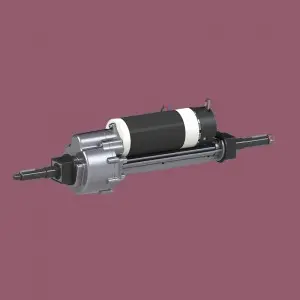If you’re a Volkswagen fan, you’ve likely heard the term “transaxle” in discussions about power and performance. But what exactly is a transaxle? How much power can it handle? In this article, we’ll take a deep dive into the world of Volkswagen transaxles to give you a complete understanding of their capabilities.
First, let’s define what a transaxle is. A transaxle is a type of transmission that combines the functions of a conventional transmission and differential into a single integrated unit. In Volkswagen vehicles, the transaxle not only transfers power from the engine to the wheels, but also provides the necessary gear ratios for optimal performance and fuel efficiency.
Now, let’s address a burning question: How much power can a Volkswagen transaxle handle? The answer to this question is not as simple as one might think. A transaxle’s power-handling capabilities depend on a variety of factors, such as the specific model of transaxle, vehicle condition, and the vehicle’s intended use.
Generally speaking, most stock VW transaxles are designed to handle the power output of the factory-installed engine. However, for enthusiasts looking to upgrade their VW engines for more power, the question of transaxle functionality becomes even more important. The good news is that many aftermarket transaxles and components are available for Volkswagen vehicles, providing enhanced power-handling capabilities for those looking to push the limits of performance.
When upgrading a Volkswagen transaxle for more power, there are several key factors that must be considered. First, the strength of the transaxle’s internal components, such as gears and shafts, should be evaluated to ensure they can handle the increased power output. Upgraded components, such as reinforced gears and a limited-slip differential, can significantly improve the power-handling capabilities of the Volkswagen transaxle.
Also, the method of transmitting power to the transaxle should be considered. For rear-wheel drive vehicles, the transaxle directly receives power transmission from the engine, which places higher requirements on its performance. In contrast, front-wheel drive vehicles distribute power to the transaxle differently, requiring a different approach to enhance power handling.
Additionally, for those interested in pushing the limits of Volkswagen’s power, it’s crucial to ensure that supporting components such as clutches and axles can also withstand the increased pressure. Upgrading the performance clutch and reinforced axles are important components to consider when pursuing higher power levels.
In the Volkswagen performance world, the term “transaxle replacement” isn’t uncommon. This involves replacing the stock transaxle with a stronger, more capable unit, often from a different VW model or even a completely different manufacturer. While this approach can significantly improve a Volkswagen’s power-handling capabilities, it requires careful consideration of compatibility and additional modifications to ensure seamless integration with the vehicle’s drivetrain.
In short, the power handling capabilities of the Volkswagen transaxle are not static. Thanks to the availability of aftermarket upgrades and the possibility of transaxle replacement, enthusiasts have the opportunity to significantly increase the power capabilities of their Volkswagen. However, when making such modifications, careful consideration must be given to the vehicle’s overall drivetrain and the vehicle’s intended use.
Ultimately, the key to unlocking the full potential of a Volkswagen transaxle is a thorough understanding of its capabilities and limitations, and a willingness to invest in quality parts and upgrades. By solving power capability issues with knowledge and precision, enthusiasts can take their Volkswagen’s performance and excitement to new heights.
Post time: Dec-25-2023


